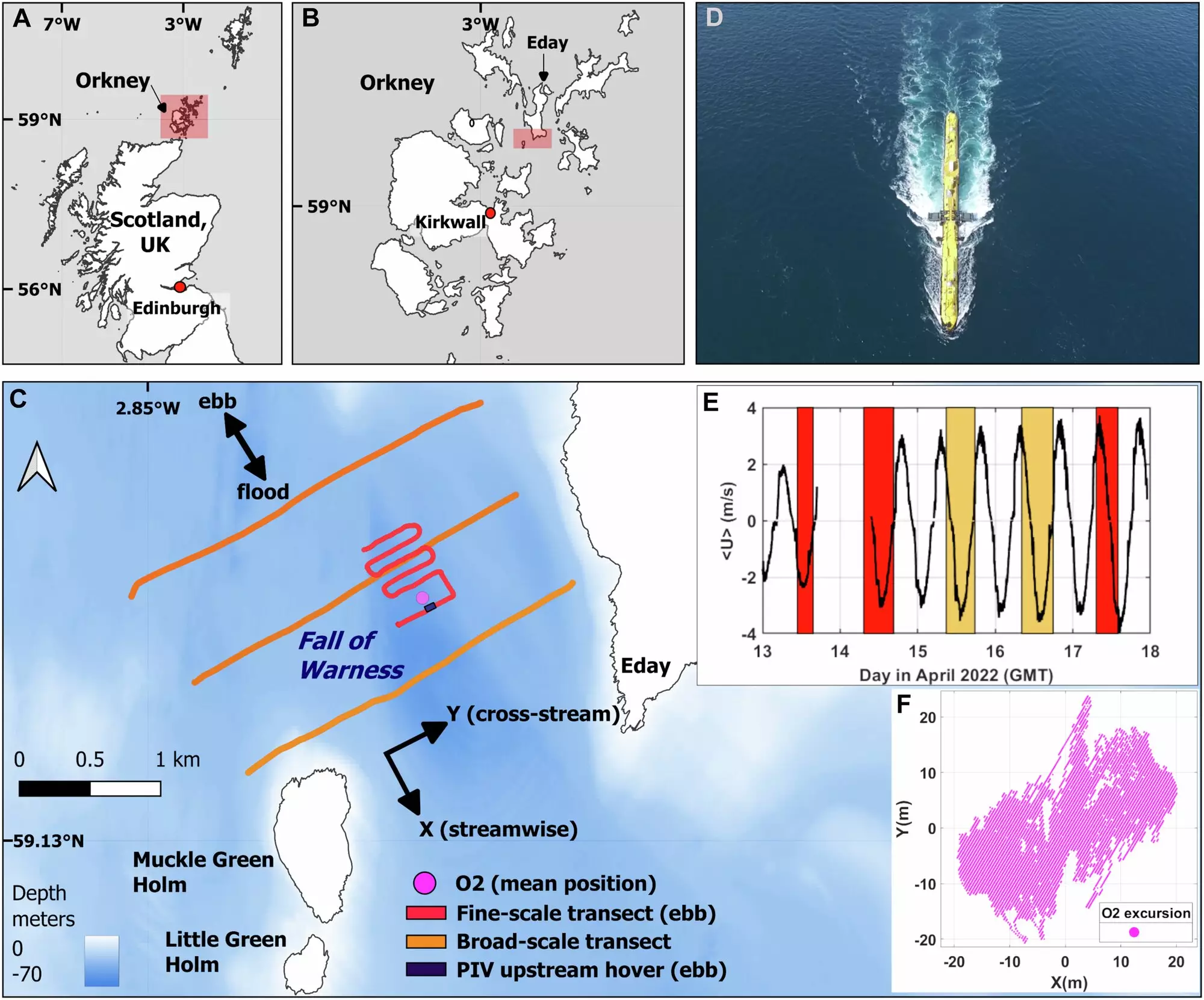The United Kingdom stands on the cusp of a significant transformation in its energy landscape, particularly with the expanding deployment of tidal power and offshore renewable energy installations. As the world’s focus shifts toward cleaner and more sustainable energy sources, the UK’s extensive coastline presents a unique opportunity to harness the predictable energy of ocean tides. However, the introduction of advanced tidal energy devices into the often turbulent maritime environment comes with a myriad of challenges. These hurdles range from the intricate dynamics of tidal flows to potential ecological impacts that these technologies may impose.
Recent scientific endeavors have delved into addressing the complexities posed by tidal energy installations. A team comprised of researchers from prominent institutions, including the Marine Biological Association (MBA), the University of Plymouth, and the University of the Highlands and Islands (UHI) Shetland, have deployed cutting-edge aerial drone technology alongside comprehensive boat-based surveys. Their focus was directed toward the innovative tidal turbine—Orbital Marine Power’s O2, strategically positioned off the Orkney Islands in Scotland, which boasts the title of the world’s most powerful tidal turbine.
What distinguishes the O2 from traditional tidal stream turbines is its unique floating design, tethered to the seabed by mooring lines. This configuration enables it to effectively capitalize on tidal energy without impediments posed by the seabed. The platform spans over 70 meters and has the potential to generate enough power to supply 2,000 homes annually. The investigations revealed that tidal currents exceeding 8 knots present significant implications not merely for the turbine’s functionality but also for the marine environments surrounding these installations.
As researchers mapped the intricate tidal flows, they uncovered critical insights regarding the wake produced by the O2. This wake does not simply dissipate but can create downstream effects that influence the location of other turbines and interact with local marine habitats. Such findings underscore the necessity for tailored site assessments before the deployment of turbine arrays. Each installation site possesses unique environmental factors, and thus, generalizing computer simulation data may overlook socially and ecologically beneficial practices.
Previous investigations have indicated that the wake generated by tidal turbines may inadvertently create enticing foraging zones for nearby seabirds, an ecologically favorable outcome. However, these benefits may come at a cost since closely packed turbine arrays can hinder the movement of marine fauna that rely on unimpeded flow through these environments. It is paramount that future installations consider the ramifications of their spatial arrangements not only on energy production but also on the delicate balance of marine ecosystems.
The promising future of tidal energy lies in its reliability compared to other renewable resources like wind and solar. The regularity of tidal forces, governed by the celestial movements of the Earth and the Moon, offers a dependable energy source that wind power cannot consistently guarantee. The turbines are adept at converting the kinetic energy present in water—rendering them significantly more powerful than their aerial counterparts due to water’s density.
Research indicates that the tide-driven systems could potentially account for up to 11% of the UK’s annual electricity consumption if appropriately harnessed. The deployment of more tidal energy systems around the UK coastline is not merely a nascent idea but a goal rooted in extensive research supporting sustainability and technological implementation.
Despite the electrifying promise of tidal energy, various obstacles confront its progress. Issues such as high installation costs, grid connectivity limitations, and the operational viability of turbines in extreme conditions of turbulence remain pressing challenges. The insightful revelations introduced by recent studies provide essential groundwork necessary for evolving field measurement techniques and ensuring long-term reliability and sustainability in tidal technology development.
Innovations like floating offshore wind farms, alongside tidal installations, signal a critical trend towards expansive offshore renewable energy infrastructure. These initiatives underscore the importance of adapting to the highly variable and multifaceted natural conditions characterizing UK waters—an aspect that cannot be entirely simulated in controlled laboratory environments.
As the imperative for clean energy grows stronger, so does the need for collaborative efforts that blend scientific inquiry with technological advancement. The vibrant interplay between tidal power and ecological integrity must guide the strategic planning of energy infrastructure in the upcoming years. Ensuring such synergy will prove pivotal—not only for the energy sector’s transformation but also for maintaining the health of ocean ecosystems vital to the UK’s marine biodiversity. Researchers are optimistic that through continuous innovation and thorough assessments based on empirical data, the tidal energy sector can resolve its existing uncertainties while contributing meaningfully to the clean energy revolution.


Leave a Reply